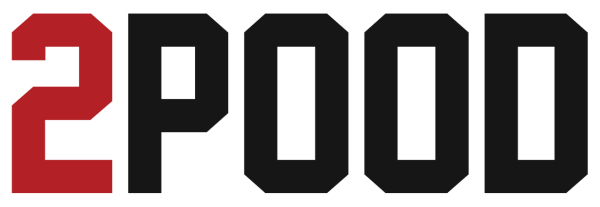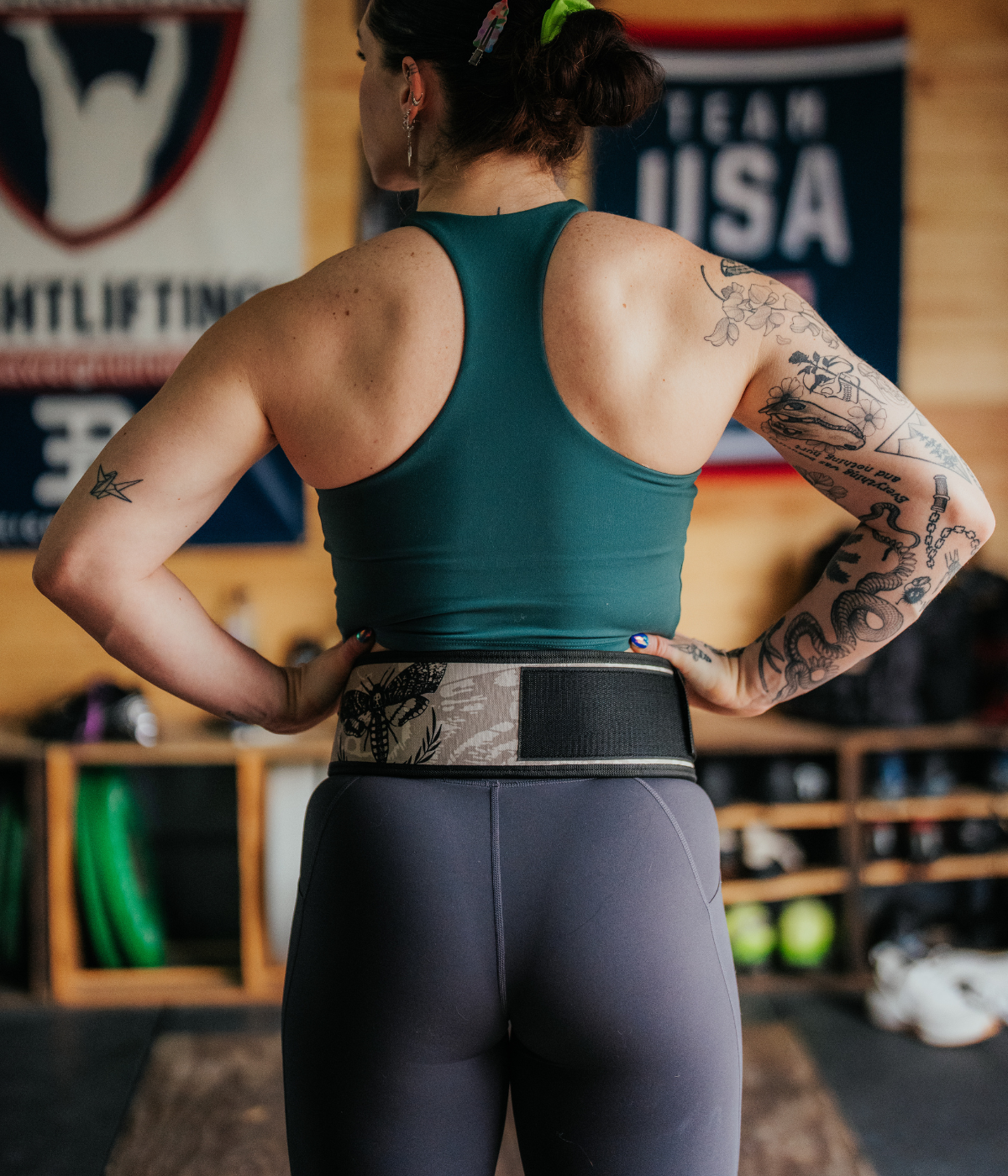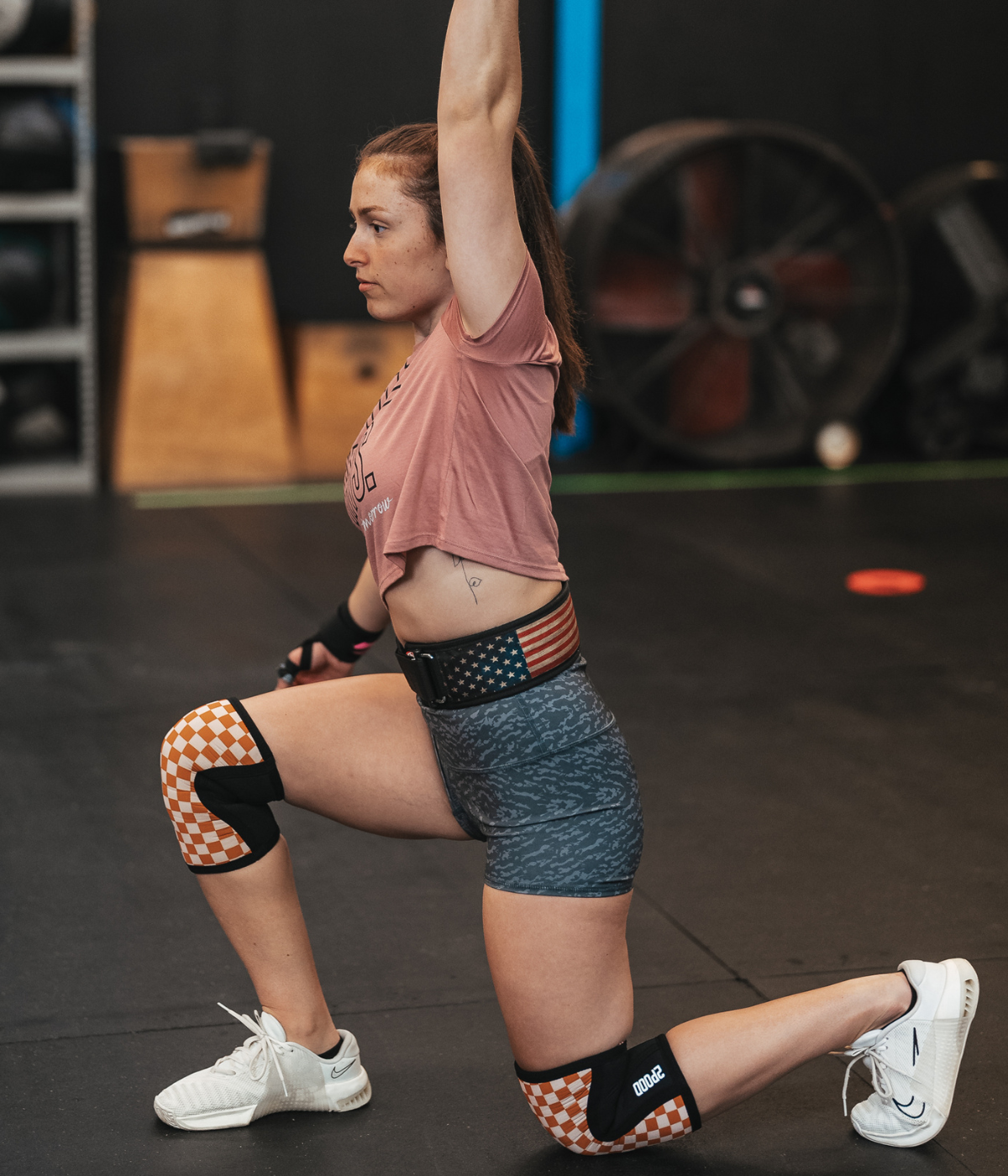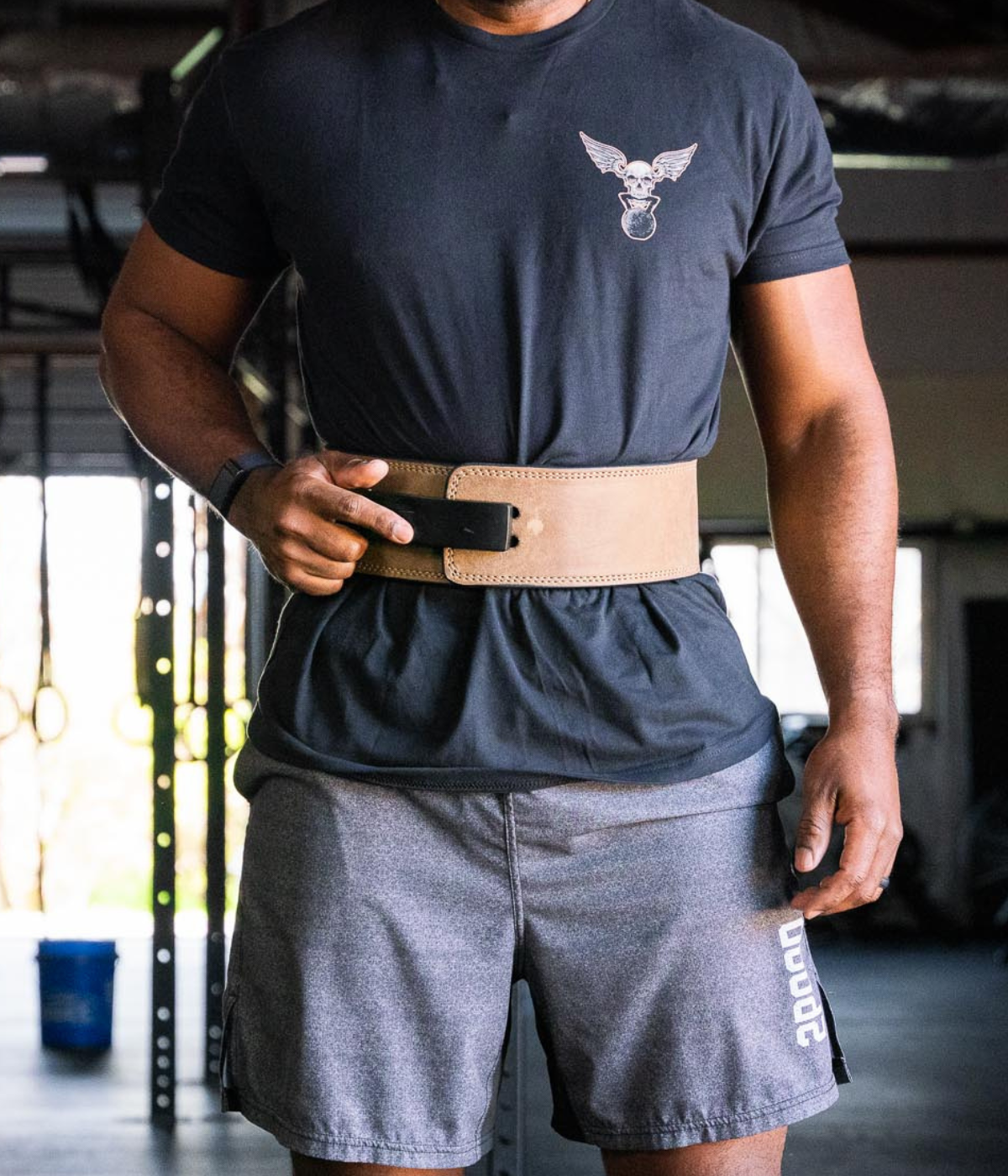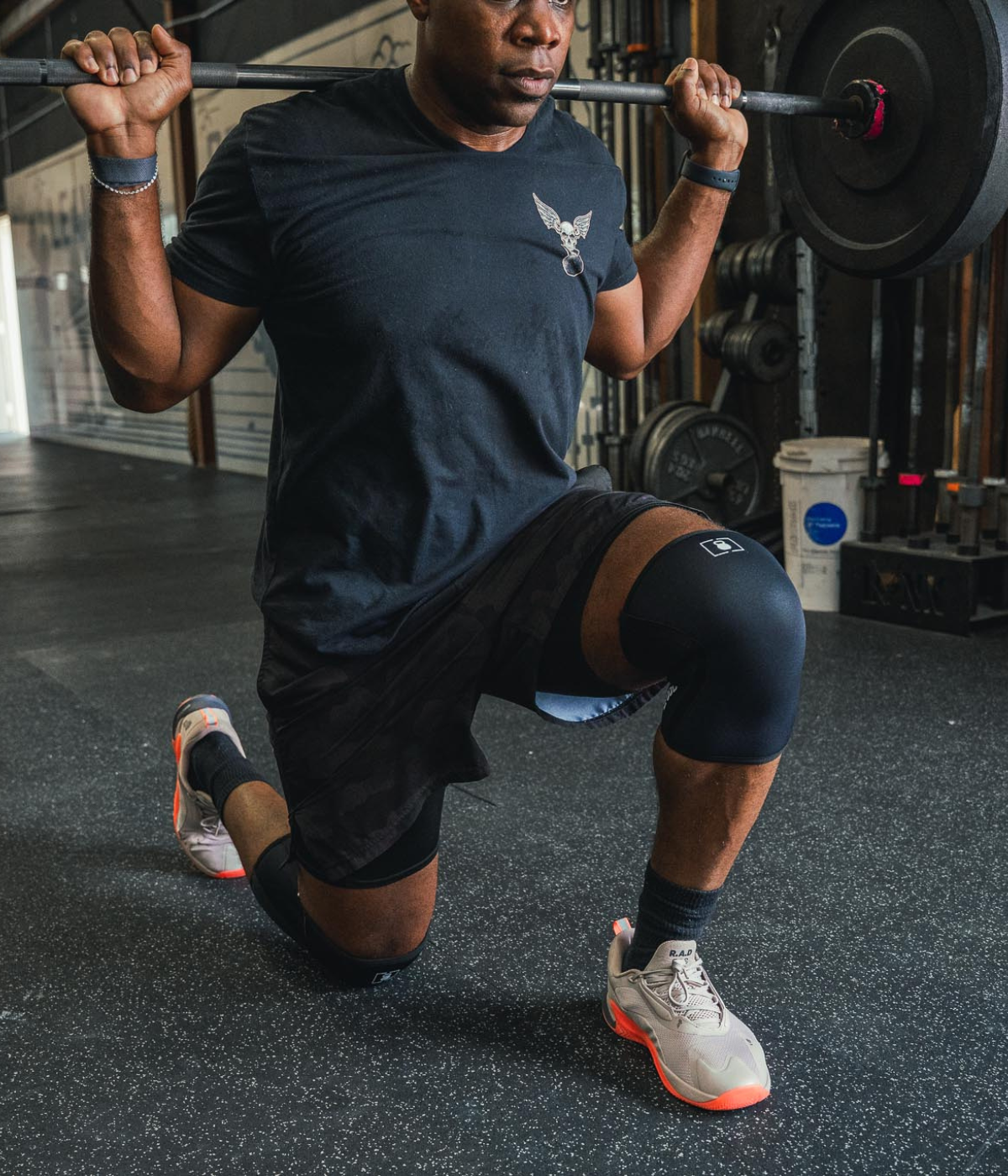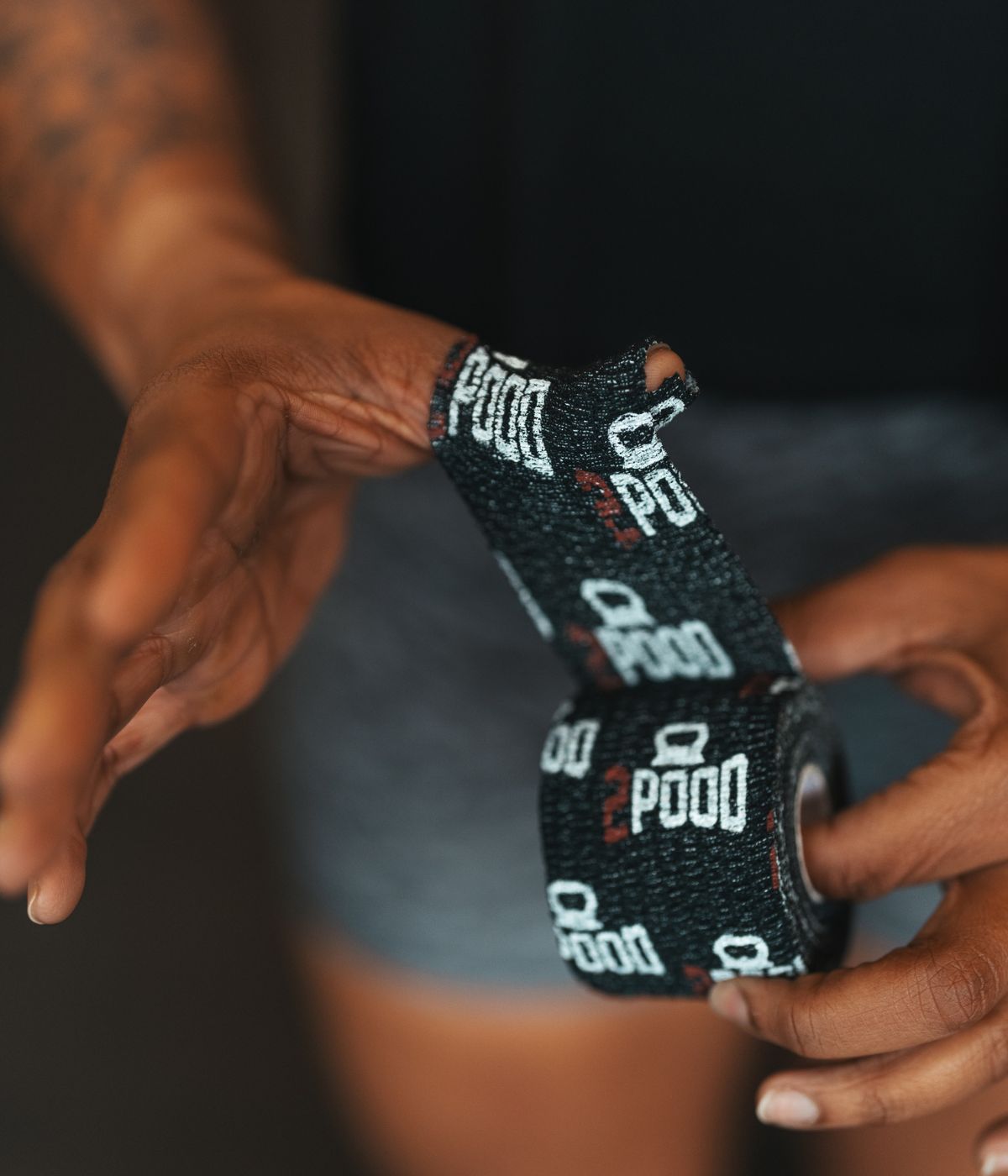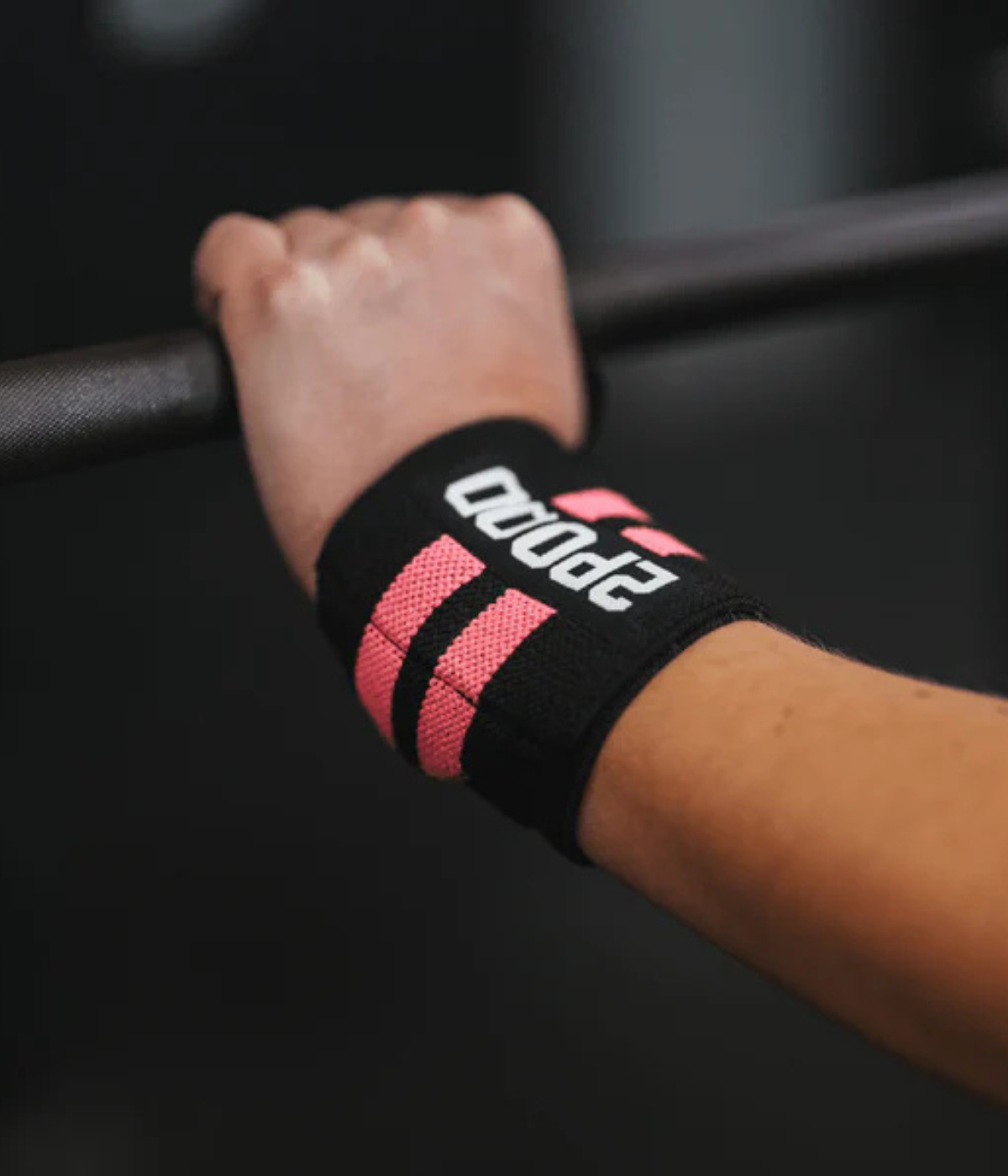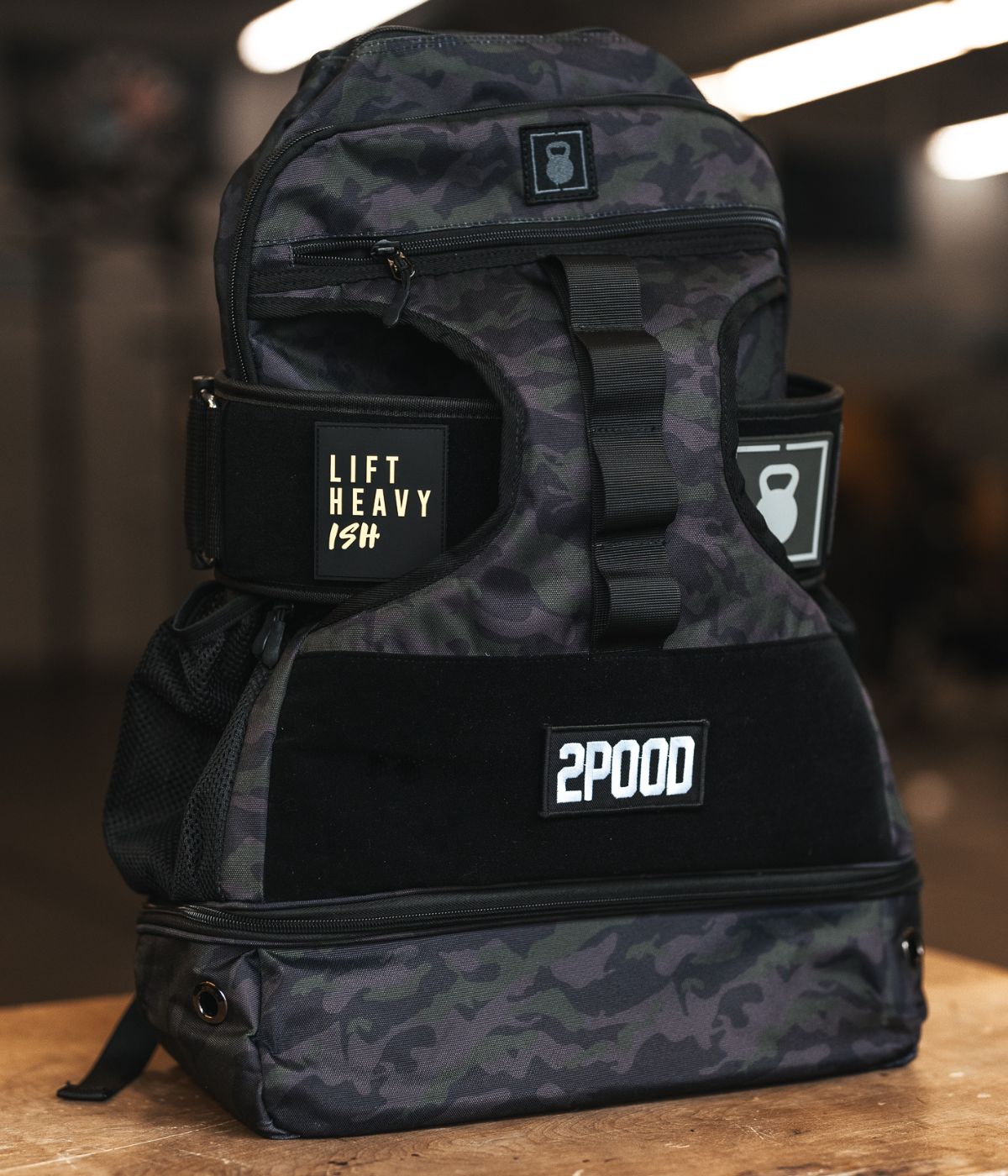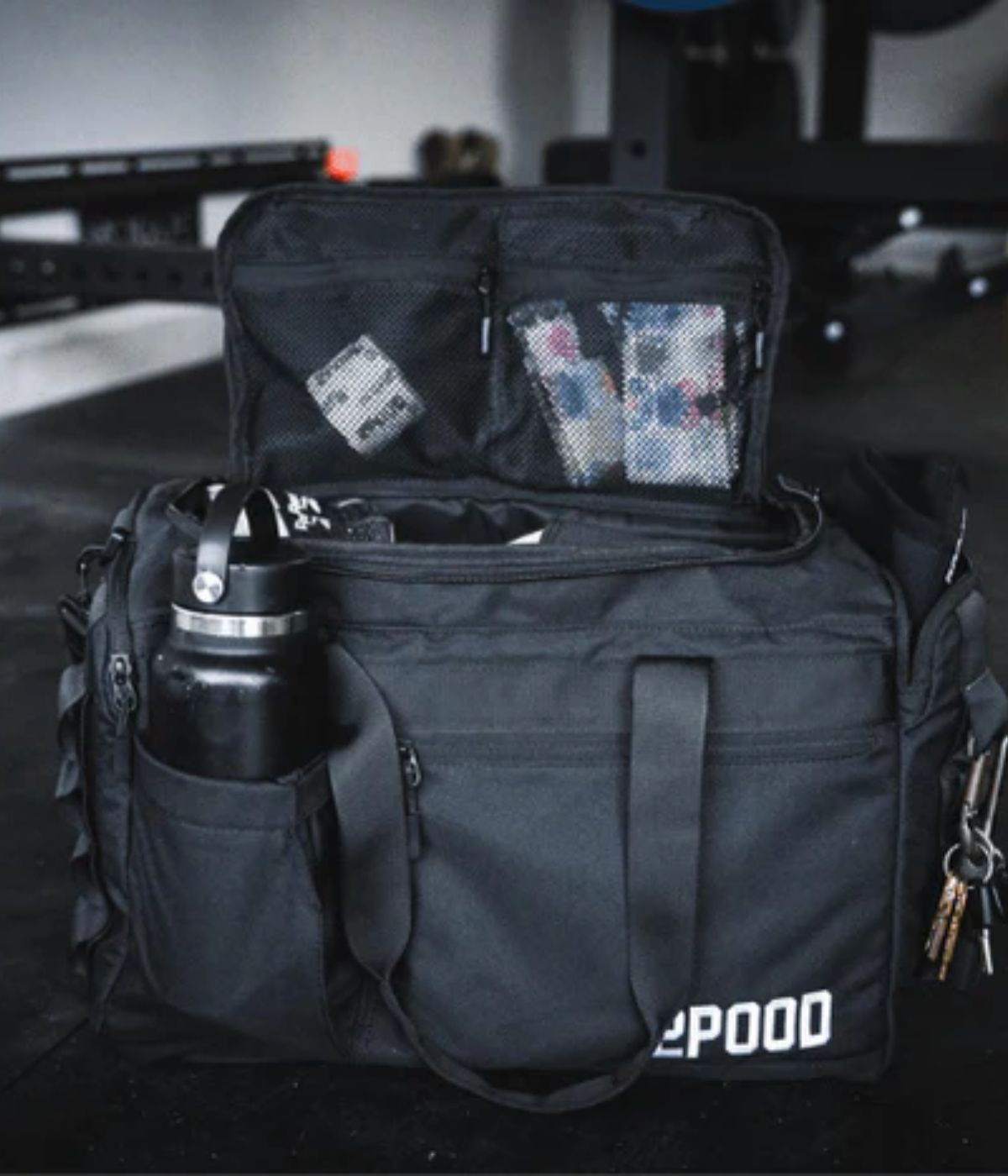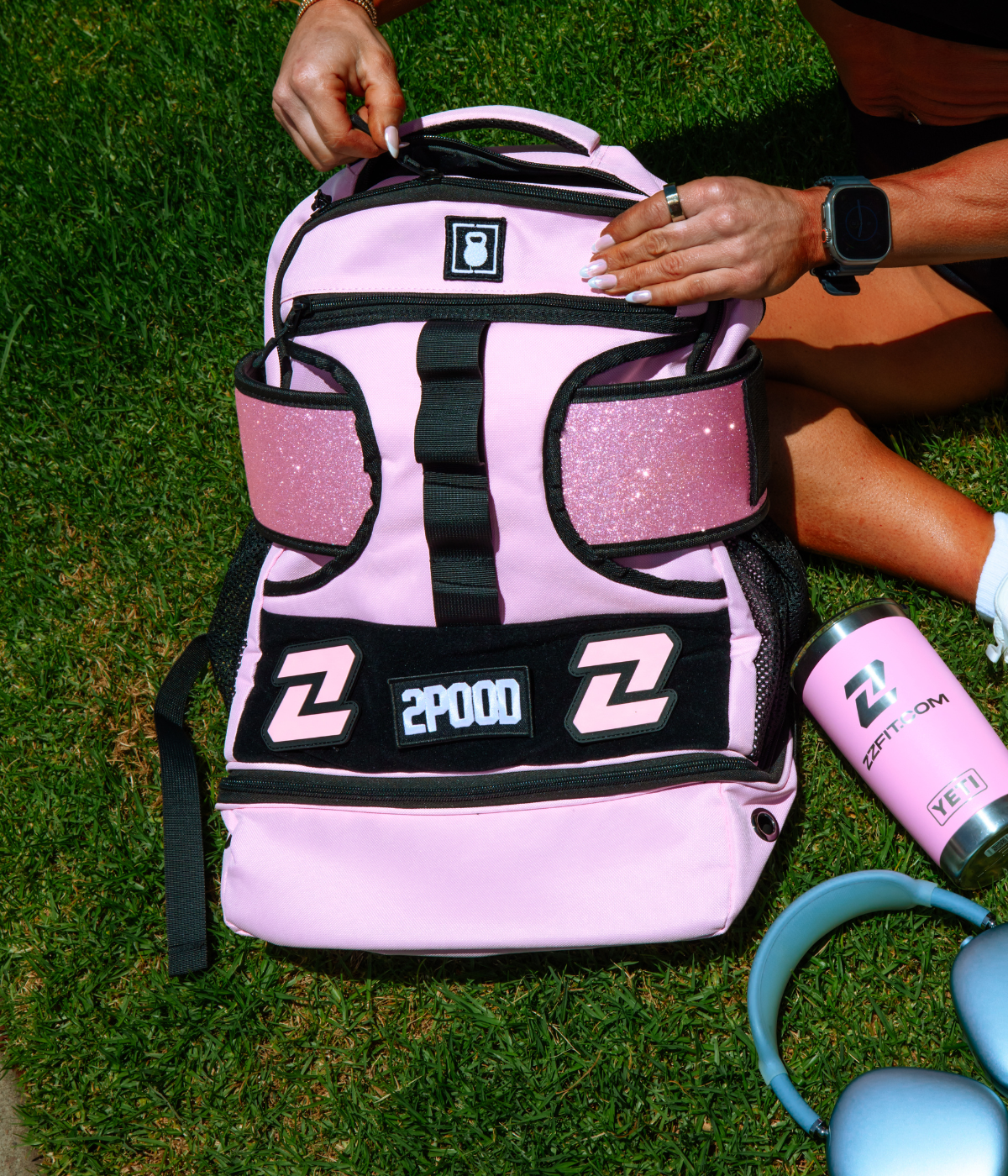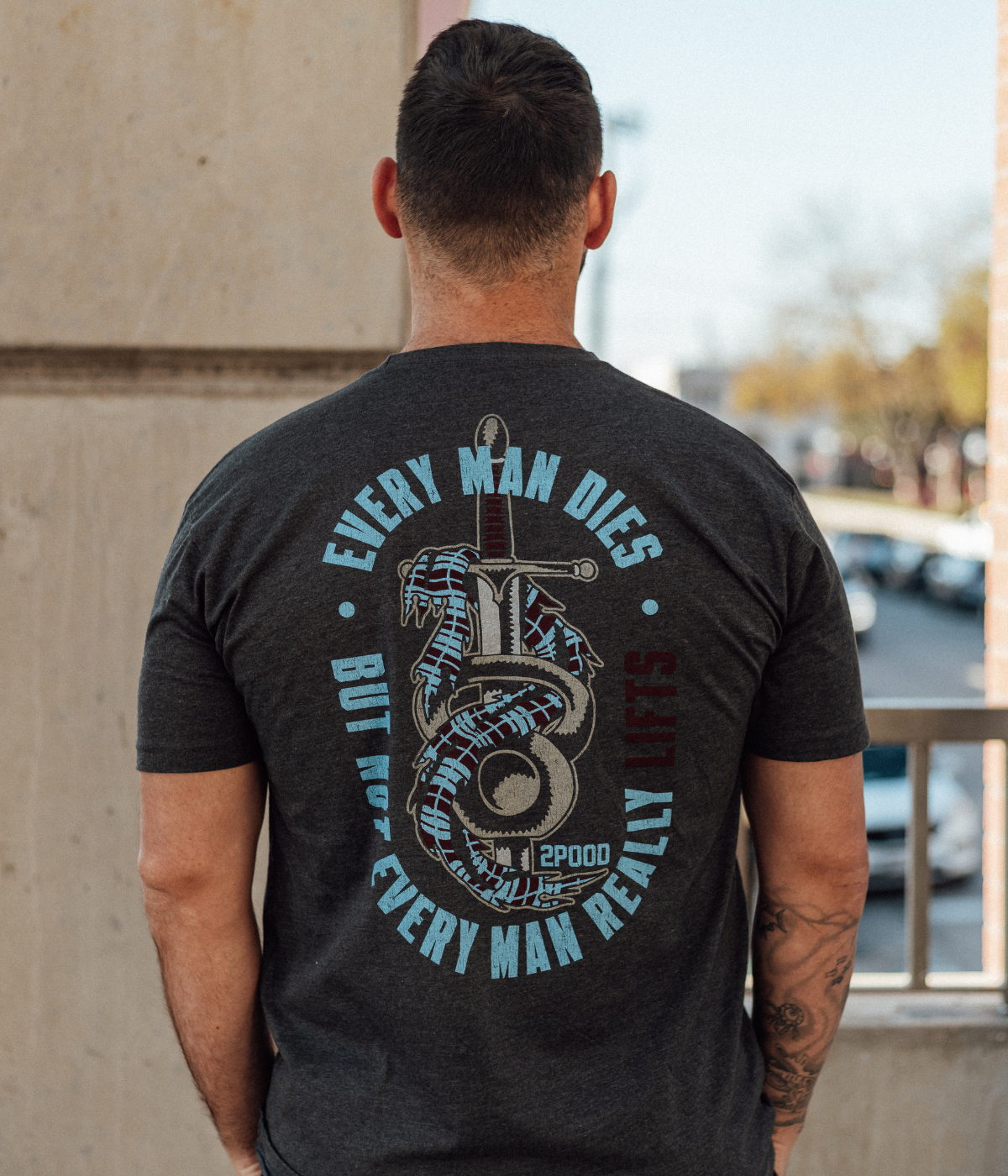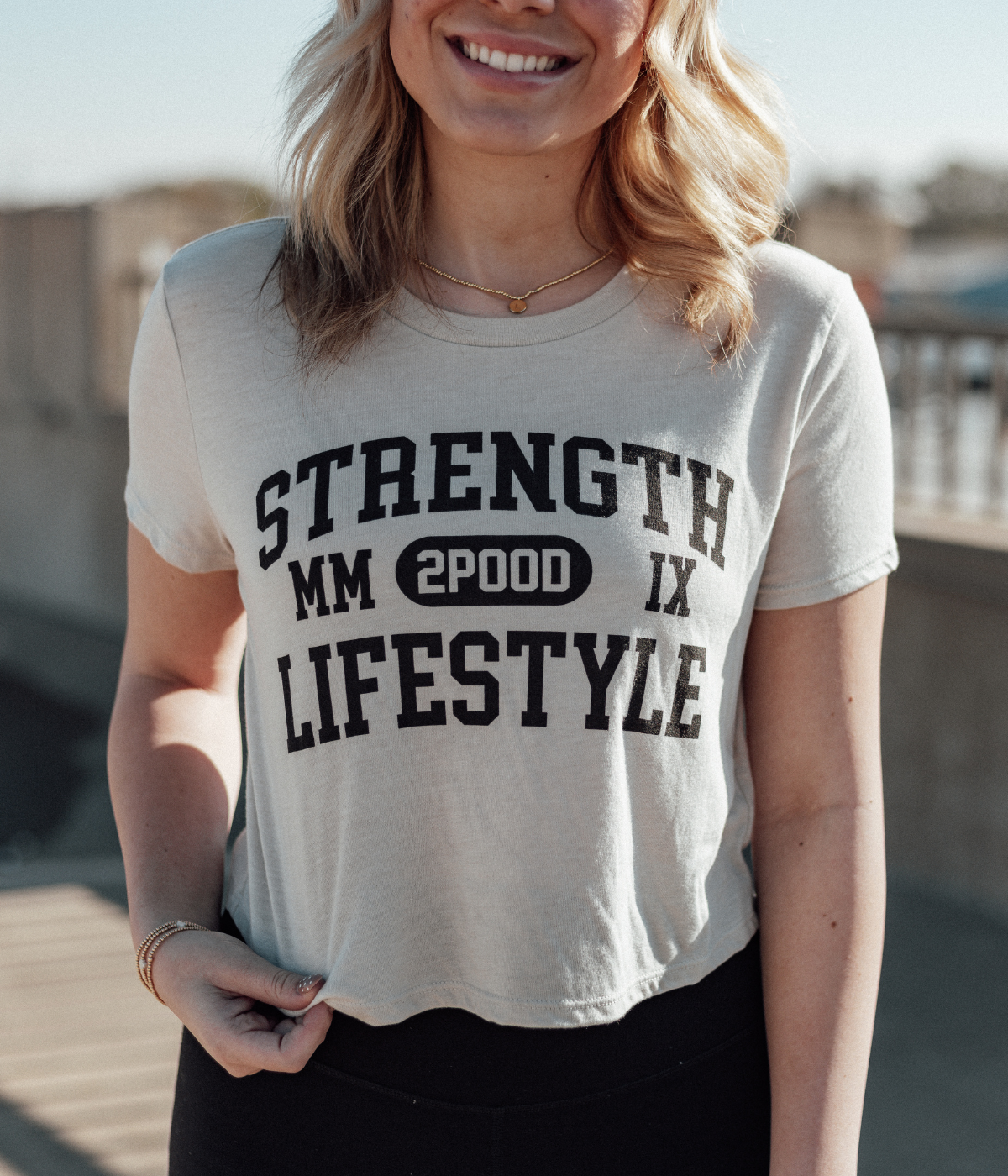Jump to sections
AN ALL-ENCOMPASSING GUIDE TO WEIGHTLIFTING BELTS
THE TL;DR ON BELTS
-
We go in depth on weightlifitng belts here. Here's the TL;DR:
- We recommend using a belt when lifting 80% or more of your 1-rep max in squat, overhead, or odd-object movements.
- Belts should be worn above the hips, below the rips, and centered around the belly-button.
- Belts don't fix poor form. A solid foundation is essential before you start wearing a belt.
- Velcro belts are ideal for CrossFit or functional movements. Lever belts are often preferred for a larger base in powerlifting.
For the enthusiasts, keep reading more in-depth about when, how, and why to wear a weightlifting belt. Or, click the button below to find the style that suits you and get started using your own.
PART 1:
WHY YOU SHOULD WEAR A WEIGHTLIFTING BELT
- There are both mental and physical reasons to wear a weightlifting belt.
Physically, they provide support and stability that is crucial to the safety and health of your lower back.
Mentally, they serve as a reminder to brace and engage your core as you work through heavier lifts during your workout.
PHYSICAL CORE & BACK SUPPORT
- Your core is - well - just that.
Your center.
Your foundation.
And protecting and taking care of your core, back and abdominal muscles is crucial to staying healthy as an athlete and a person in general.
In the United States, around 1 in 10 adults suffer from severe lower back pain, and nearly 80% of adults will experience back pain at some point during their lifetime.
And that number only increases with age.
Because of those startling numbers, it's essential to do everything possible to protect your core and lower back while striving to be the best, healthiest athlete that you can be.
One of the greatest ways to maintain a healthy core is to maintain stability throughout your workouts.
An unstable core leads to increased chances of injury to muscles and discs.
Physical Therapist Scott Weiss, C.S.C.S., D.P.T.says, “Stability is key to the health of the lumbar spine, as it protects discs, supports muscles and joints, and limits injury,”
And weightlifting belts can help do just that: stabilize your core.
Physical therapist Joe Gambino, C.S.C.S., D.P.T. says, "Weightlifting belts can increase intra-abdominal pressure to help stabilize your spine when lifting heavy loads"
MENTALLY ENGAGING YOUR CORE
Mentally, a weightlifting belt is the little voice in your head:
"Engage your core."
"Engage your core."
"Engage your core."
It's the reminder you need during any lift where you have a tendency to release the tension and pressure in your core out of exhaustion and leave yourself susceptible to injury.
PART 2:
WHEN TO WEAR A WEIGHTLIFTING BELT
When to wear a weightlifting belt varies on three main variables:
1. Weight
2. Exercise
3. Expertise
We'll talk about these 3 different considerations in detail in this section.
85% RULE
- The quick and easy, most common recommendation for when to wear a weightlifting belt is when you are lifting 85% or more of your max.
That level of strain and pressure is the right time to support your core and lower back with a belt.
BELT MOVEMENTS
- Which lifts are helpful to wear a weightlifting belt in can also vary athlete to athlete, but here are some common lifts and movements that athletes will wear a belt for.
SQUAT MOVEMENTS
BACK SQUAT
FRONT SQUAT
DEADLIFT
OVERHEAD SQUAT
OVERHEAD MOVEMENTS
SNATCH
CLEAN AND JERK
HEAVY BARBELL LUNGES
ODD OBJECT LIFTS
LOG LIFT
SANDBAG CLEANS
YOKE CARRY
ASK A COACH
- Lastly, the best way to know if you should wear a weightlifting belt is to ask a coach.
A good coach will be able to recommend when the right time to use a belt is for you based on the workout, lift, weight, and more.
We recommend learning the core lifts without a weightlifting belt so that you learn how to engage your core first.
No belt can replace engaging your core. They can only support and stabilize proper form.
FIND YOUR BELT TODAY
PART 3:
HOW TO PROPERLY WEAR A WEIGHTLIFTING BELT
- When wearing a weightlifting belt, you want to make sure the belt is:
1. Secured appropriately - 2. Positioned correctly
- 3. Tightened sufficiently
- We'll cover these three areas below. You can also watch this short video that will cover these three topics in real time.
SECURING YOUR BELT
-
- There are different types of securing mechanisms for belts. The three main locking mechanisms are:
- Self-locking clamp (our WODClamp)
- Velcro only
- Prong
- Lever
We discuss the differences in these locking mechanisms in the following section. That said, no matter which locking mechanism you choose, it's essential to ensure that your belt is secured appropriately to avoid popping off and endangering yourself in the middle of a heavy lift.
POSITIONING
When positioning your belt, you want to make sure it is sitting above your hips, centered around your naval.
One of the most common mistakes is wearing a weightlifting belt too low around the waist like a regular belt. Wearing a belt this way does not engage the core abdominal muscles that provide necessary core support for heavy lifts.
TIGHTNESS
Lastly, you want to make sure the belt is tight enough to engage your core and brace against so that it provides that support you need.
In general, the tighter the belt, the better. The more tension in the belt, the more support it will be providing.
It's okay if the belt is so tight that it's slightly uncomfortable. You don't need to leave it like this for long, as long as it's tightened down securely while you're in the middl
PART 4:
DIFFERENT TYPES OF WEIGHTLIFTING BELTS
- Belts can vary on a variety of factors including material, locking mechanism, and width.
In this section, we'll look at what styles and materials exist for weightlifting belts and why we've chosen to construct ours the way that we have.
MATERIAL
NYLON
Nylon belts are a great option for lifters at any level. Designed to hug and and mold to your body, they provide great support while also providing a flexible fit. Nylon belts allow for a more tailored fit, and they are easy to adjust throughout your workout, especially if you're transitioning between movements.
LEATHER
Leather belts are built for longevity and have a thick, rigid feel. There is a "break in" period for leather belts so that they can adequately wrap around your body. Leather belts are not as adjustable as nylon belts, but they are great for compounds lifts such as deadlifts and back squats.
LOCKING MECHANISM
SELF-LOCKING WODCLAMP
The WODClamp, like the one on 2POOD belts, secures the belt before ever engaging the velcro. It allows for a tight fit while also relieving some tension from the velcro to improve its longevity. The WODClamp also allows for the belt to be loosened without fulling taking the belt off, making it ideal for transitioning between movements during a workout.
LEVER
Lever belts have a fixed position that does not change unless you unscrew the lever to a new position on the belt. They are not easily adjustable and are not ideal for sharing. Lever belts have a very secure fit that is designed to give a quick release once a lift is completed. Some lever belts are the belts approved by the USAPL association and the IWPF
PRONG
These belts are similar to a clothing belt where you adjust tightness with a buckle. Usually seen on leather belts, prong belts are great for a heavy duty belt, but are not as custom of a fit for the lifter. Prong belts are, for some, a little harder to adjust sizing. Some prong belts are approved by the USAPL association and the IWPF
2POOD BELTS
2POOD Belts are nylon material with a self-locking WODClamp. This design is a ideal for providing flexibility, security and support to the belt. The WODClamp assists the nylon by reducing tension on the belt and allowing for a tight, easily adjustable feel.
Check out the different varieties of belts that we carry below!
STRAIGHT WEIGHTLIFTING BELT
The straight belt is 4" width belt all the way around the belt. Our 4" straight belt is the Official belt of USA Weightlifting and provides great support and security with the the 2POOD WODClamp. You can check out all of our Straight Belts here.
3" PETITE WEIGHTLIFTING BELT
The 3" Petite Belt provides the same great support as the 4" straight belt, but is designed for athletes with shorter torsos who find that the 4" belt digs into their ribs and causes discomfort.
The Petite Belt is 3" all the way around the belt. You can find more 3" petite belts here.
METCON BELT
The Metcon Belt is a 6" weightlifting belt that is design that supports higher up the back. Some athletes who are lifting heavier and do not have any gymnastics or cardio to switch between will prefer the Metcon belts.
You can find more metcon belts here.
PART 5:
HOW TO SIZE YOURSELF FOR A WEIGHTLIFTING BELT
- When it comes to sizing yourself for a weightlifting belt, you want to make sure the belt sits in the correct position and is the appropriate length for you.
While we can't speak to sizing yourself for weightlifting belts of all brands, we will talk about how to size yourself correctly for a 2POOD belt.
HOW TO CHOOSE A BELT SIZE
- Take a soft tailors tape around your waist (above your hips) as that's where the belt rests. Take the measurement and compare it to our sizing guide that can be found here.
- *Note that our sizing guide is unique to our belts, and we do not recommend sizing based off of other brands or sizing.
- If you are in-between sizes we suggest sizing down.
HOW TO MAKE SURE YOUR BELT FITS PROPERLY
Once you have received your belt we have some tips to let you know if yours is a good fit!
1. Make sure to position your belt where the two ends are in the middle of your waist. Once there grab the velcro end in your left hand and the main part of your belt in the right hand, take a deep breath, and pull your hands towards each other to tighten. Make sure the belt is ABOVE your hips so it tightens properly.
2. Once tightened your belt should be snug but not painful. The "ideal gap" for your belt is about a half inch to two and half inch gap between the ends of your belt. Any overlap means the belt is too large and too much of a gap means the belt is too small.
If you need to exchange your belt for a different size you can the return and exchange information here.
PART 6:
WEIGHTLIFITNG BELT COMPLIANCE
- Different sports have different rules when comes to weightlifting belts. We'll cover compliance in:
2. Powerlifting
3. CrossFit
To make sure you have the belt that you need.
WEIGHTLIFTING
- The IWF, or International Weightlifting Federation has a rulebook for technical and competition rules and regulations. This rulebook is approved by the IWF Executive Board and ratified by the IWF Congress.
- Section four of the rules covers athlete's outfits, and under the outfits section is a section for approved belts for competition. 4.4 of the rulebook states that:
-
- - 4.4.1 A weightlifting belt may be worn. If used, it must be worn on the outside of the costume.
- - 4.4.2 The maximum width of the belt is twelve (12) cm.
- 2POOD weightlifting belts are IWF approved and are also the official belt of USA Weightlifting.
- You can find the full compliance rulebook here.
POWERLIFTING
- The IPF, or the International Powerlifting Federation, has a Technical Rules Book that covers the rules and regulations of the Powerlifting.
- Page 14 of the rule book covers information about belts.
- - Belt must be worn outside of the lifting suit.
- - Belt body must be made of leather, vinyl or similar non-stretch material in one or more laminations which may be glued and/or stitched together.
- - It shall not have additional padding, bracing or supports of any material either on the surface or concealed within the laminations of the belt.
- - The buckle shall be attached at one end of the belt by means of studs and/or stitching
- - The belt may have a buckle with one or two prongs or “quick release” type (“quick release” referring to lever.)
- - A tongue loop shall be attached close to the buckle by means of studs/or stitching
- - Thickness of belt maximum 13 mm along the main length
- - Width of belt maximum 10 cm
- You can find the full breakdown of the approved belts here.
- 2POOD belts are not IPF approved.
CrossFit WEIGHTLIFTING BELTS
- CrossFit does not have set rules against any type of belt. You can find info for each workout that describes the equipment allowed, but CrossFit usually allows: "A belt of any type can be worn but is not required."
- You can find an example here.
- 2POOD straight belts are equipped with the WODClamp which makes them ideal for CrossFit workouts since it allows for easy transitions between strength, gymnastics and cardio movements without the need to take off the belt.
- You can find more info about the WODClamp here.
